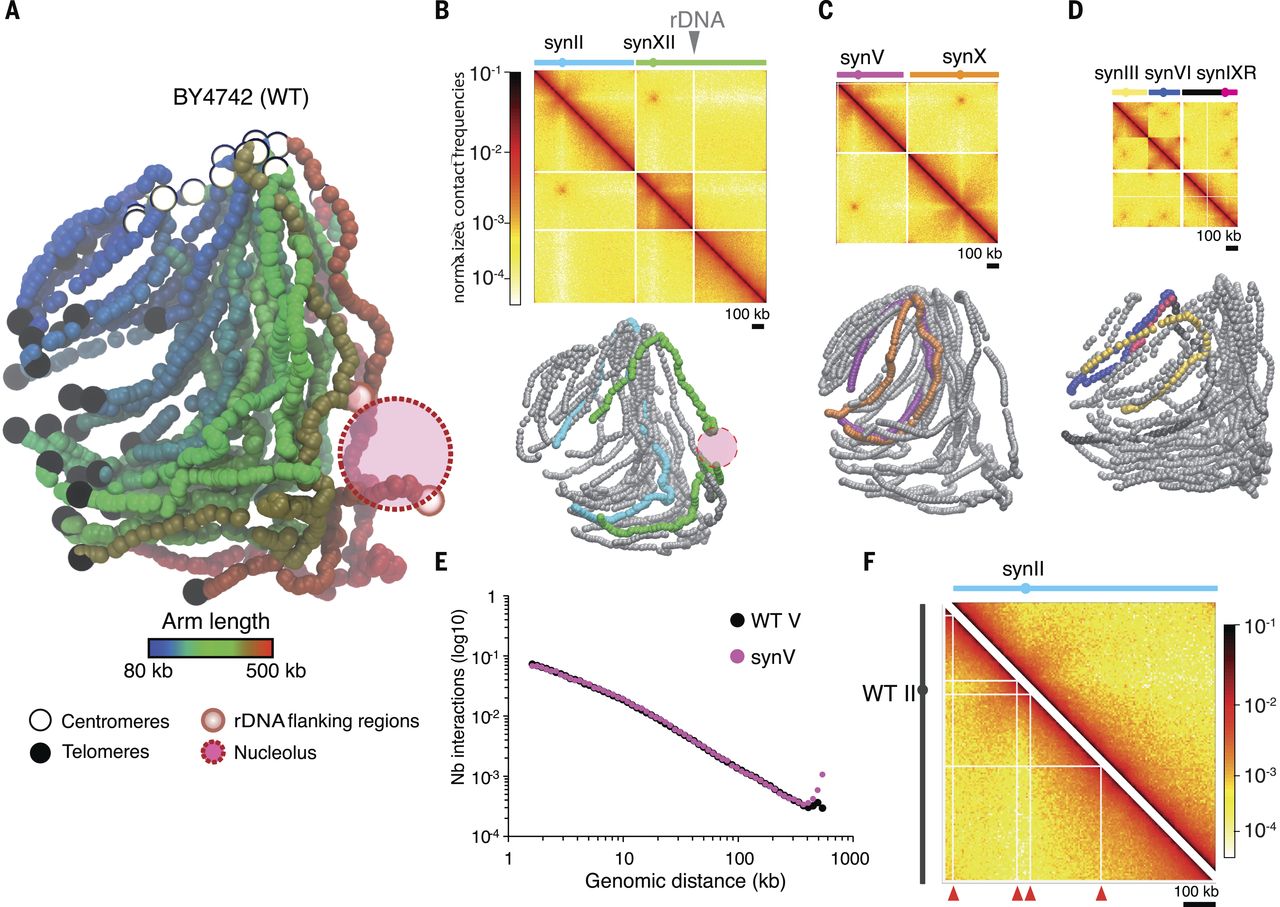The Ultimate GMO: Fully Artificial Chromosome Yeast

The most large-scale (quantitatively and qualitatively) experiment of a gene modification of an eukaryotic organism continues.
An international group of more than 200 scientists published in the journal Science the latest results of the Synthetic Yeast Project (Sc2.0) , the ultimate goal of which is to create baker's yeast with a fully synthetic genome. At the moment, 6 chromosomes are synthesized, which replaced their natural counterparts. The resulting Saccharomyces cerevisiae organisms are quite viable and have several predetermined complex design properties.
Eukaryotes - "normal fusion" - organisms in which the genetic material is enclosed in a separate organelle, surrounded by a membrane-shell - the nucleus. It is easy to say that all living things that are not bacteria (they have no nucleus) are eukaryotes. Yeast is an exemplary eukaryotic organism both for an ordinary person (it is enough to recall how bread and beer are made) and for a biotechnologist. Being a so-called model organism, yeast has the best properties for studying the basic life processes of eukaryotic cells. Not surprisingly, respectively, the choice of the body by the Sc2.0 team for such unprecedented interventions.
')
The basic design principle of the new genome, declared by the team, is to achieve a balance between maintaining the wild-type phenotype (external characteristics of the natural variant of the S288C subspecies), introducing induced genomic mobility and removing sources of genomic instability.

Chromosomes assigned to synthesize subcommands
The preservation of the phenotype is achieved by preserving the actual genes. Their order and number on the chromosomes decided not to change, with the exception of some important specific groups.
Induction of genomic “mobility” is achieved through the SCRaMbLE recombination system, which shuffles portions of the chromosomes when a specific signal is sent to loxPsym portions specially introduced into the genome at strategic sites. This makes it possible to include a simulation of one of the global, “large” mechanisms of evolution on the scale of the entire genome. At the same time, scientists tried to remove such a large-scale source of genomic evolution as mobile elements, which, under certain conditions, “copy-paste” themselves or “cut-pieces” with an unpredictable result. We can say that scientists took the macroevolution of the yeast genome from the hands of chance in their own.
Other changes to the code itself include the isolation of transfer RNA genes for a separate neochromosome, the removal of many introns, the inclusion of special tags in the genome to make it easier to distinguish synthetic and natural chromosomes in cells, and the inclusion of special stages to simplify chromosome assembly. The average distance between the sites that distinguish the synthetic genome from the natural one is small — about 400 basic DNA pairs.
For all its revolutionary nature, the synthesis nevertheless occurred not from scratch, but by removing and attaching new regions to the natural chromosomes (hierarchical recombination). To speed up the process, different chromosomes were assigned to synthesize subcommands in different countries. The assembly of several artificial chromosomes in a single cell also occurs hierarchically.
Using the methods of phenotyping, structural and functional genomics, scientists were convinced of the normal functioning of synthetic yeast. One of such methods of monitoring a successful project is contact analysis of chromosomes. The modern Hi-C method allows analyzing the internal structure of the nucleus by calculating the probabilities of chromosome contacts with themselves and with each other at different sites. The three-dimensional version of such a visualization clearly showed that artificial chromosomes, despite their shortening (removed introns) and designer inserts, occupy positions in the nucleus that are similar to their natural counterparts. In the illustration below, each chromosome is a pair of branches of different lengths hanging from a certain point along its length — the centromere (white circles at the top of A). The artificial chromosomes highlighted in color on B, C and D unambiguously generally correspond to their counterparts on A in position and orientation. It should be noted that this visualization is precisely probability-averaged over billions of cells, so that not the “positions” of the branches are shown, but something remotely associated with the square of the psi-function module in quantum mechanics.

Work on the assembly was carried out and conducted "from the bottom up", with full computer modeling, step-by-step synthesis of the sites, followed by debugging. At the moment, the team is not faced with serious fundamental bugs that would call into question the possibility of the project or the theoretical basis of the design.
The Synthetic Yeast Project is the most significant “act of creation” of a person alive today. Yeast will now become not only the most studied eukaryote, but also a fulcrum, thanks to which you can learn by creating. The book of life can hardly be understood without trying to write it.
The team plans to complete the body assembly by the end of 2017.
Source: https://habr.com/ru/post/402777/
All Articles